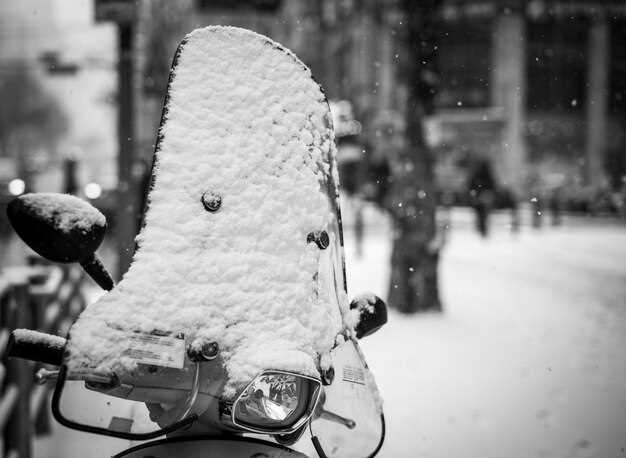

As the cold winter months approach, motorcycle enthusiasts face the inevitable task of preparing their cherished bikes for storage. Proper care during this transition is essential to ensure your motorcycle remains in excellent condition for the next riding season. A well-winterized motorcycle can prevent potential damage caused by harsh temperatures, ice, and moisture that often accompany winter weather.
Winterizing your motorcycle goes beyond simply putting it away for a few months; it’s about safeguarding your investment. From addressing battery maintenance to ensuring your fuel system is protected, each step plays a critical role in preserving the performance and longevity of your motorcycle. As you embark on this essential seasonal task, understanding the key components of winterization will help you achieve peace of mind knowing your ride will be ready when spring arrives.
In this article, we will guide you through the vital steps to prepare your motorcycle for cold weather storage. Following these recommendations not only demonstrates your commitment to maintaining your bike but also enhances your riding experience in the long run. Let’s dive into the essentials of winterizing your motorcycle and ensure it’s well taken care of during the harshest months of the year.
Preparing Your Motorcycle: Fluids and Lubrication
Before storing your motorcycle for the winter, it’s essential to ensure that all fluids are properly maintained. This not only protects your bike but also guarantees a smoother ride when spring arrives. Start by checking the engine oil. It’s advisable to change the oil and oil filter to eliminate any contaminants that could corrode engine components during the cold months.
Next, focus on the coolant system. Make sure your antifreeze is at the correct level and mixed properly to prevent freezing. A high-quality coolant will further protect against corrosion and seals any leaks that may develop during storage.
Brake fluid should also not be overlooked. Replace old fluid to enhance braking performance and to prevent moisture build-up, which can lead to rust and degradation of brake components. Regular checks of hydraulic fluids ensure your motorcycle is ready to roll once winter is over.
Consider the fuel system next. It’s vital to treat your fuel with a stabilizer before storage to prevent the degradation of the gasoline, which can lead to engine problems. Run the motorcycle for a few minutes after adding the stabilizer, allowing it to circulate throughout the fuel system.
Lastly, lubricate all moving parts to minimize friction and prevent rust during storage. Pay attention to cables, chains, and pivot points, ensuring they are well-greased. This care not only protects your motorcycle but also enhances its longevity and performance when you take it out of storage.
Protecting Your Motorcycle: Covers and Storage Solutions

As winter approaches, ensuring the longevity of your motorcycle requires careful attention to storage solutions and protective measures. One of the most crucial steps is selecting a high-quality cover. A good cover shields your bike from dust, moisture, and harsh cold, significantly reducing the risk of corrosion and damage. Opt for covers made from breathable fabrics to prevent moisture buildup, which can lead to mold or rust.
In addition to using a protective cover, it’s essential to choose the right storage location. Ideally, your motorcycle should be stored indoors in a climate-controlled environment. A garage or shed helps keep your bike safe from extreme temperatures and weather conditions. If indoor storage isn’t an option, consider utilizing a motorcycle storage tent or a custom tarp setup designed for winter protection.
Before storing, ensure that your motorcycle is properly prepared for the cold months ahead. This includes performing maintenance tasks such as changing the oil, filling up the gas tank, and adding a fuel stabilizer. A thorough cleaning and waxing also provide an extra layer of protection against the winter elements.
Regularly check on your motorcycle during the storage period to ensure that no moisture has accumulated and that the cover remains secure. Taking these precautions will enhance your motorcycle’s longevity and ensure it’s ready to ride when spring returns.
Maintaining Battery Health During Winter Storage

Proper care of your motorcycle’s battery during winter storage is essential to ensure it remains in good condition and ready for use when warmer weather arrives. Here are some key steps to maintain battery health during this period:
- Choose the Right Location:
Store your motorcycle in a cool, dry place away from direct sunlight. Temperature fluctuations can harm battery performance.
- Clean the Battery Terminals:
Before storage, clean the battery terminals to prevent corrosion. Use a mixture of baking soda and water to neutralize any acid build-up.
- Charge the Battery:
Fully charge the battery before storing it. A fully charged battery is less likely to freeze and will maintain its health during the off-season.
- Disconnect the Battery:
If possible, disconnect the battery from your motorcycle to prevent parasitic drain from electrical components.
- Use a Battery Tender:
Consider using a smart battery maintainer or tender. These devices keep the battery charged without overcharging, ensuring optimal health during long-term storage.
- Check Battery Water Levels:
If you have a lead-acid battery, regularly check water levels and top off with distilled water if necessary. This prevents damage from dehydration.
- Inspect for Damage:
Regularly monitor your battery for physical damage, swelling, or leaks. Address any issues immediately to avoid further complications.
By following these guidelines, you can ensure that your motorcycle’s battery remains healthy during winter storage, making it easier to start and ride as soon as the warmer months arrive.
